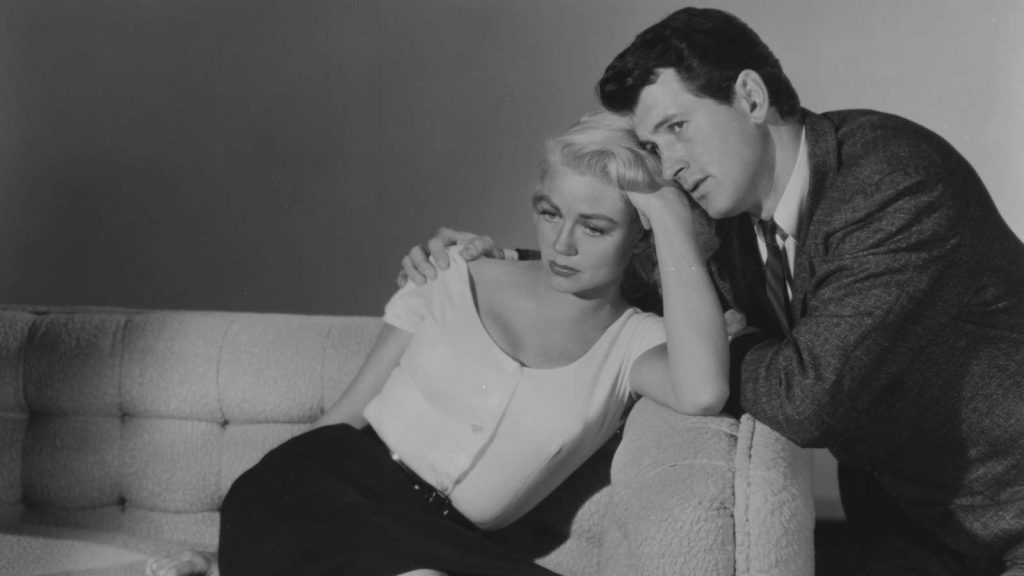Douglas Sirk’s style is unmistakable. In the last 70 some years his films have become synonymous with the America of the nuclear age. I have written before about how Sirk quietly subverted the very culture his films are representative of in the popular mind, how Sirk remained distinctly German in his worldviews and his sense of morality. But recently I have watched six of his films in quick succession and have drawn some new conclusions about his technique and his methodology in the construction of his films.
Primarily I would like to focus on Sirk’s cinemascope feature The Tarnished Angels (1957). Where Magnificent Obsession (1954) epitomizes Sirk’s employ of soundtrack and color as tools with which to tug at the heartstrings of his audience, The Tarnished Angels is representative of Sirk’s prowess as a visual director. Like all of Sirk’s films the narrative of The Tarnished Angels is almost ridiculously melodramatic, yet manages to emote strongly despite of its obvious artifice. This durability, flexibility under artifice can be accounted for in the film’s visuals, which conform to two unique style choices.

Firstly, Sirk utilizes the ratio of cinemascope in the exteriors to shrink the film’s characters, to minimalize their presence in the frame, pushing them into the corner so that the frame may focus on the larger world around the melodramatic narrative. This tactic gives the illusion that the reality of The Tarnished Angels occupies only the most minute pocket of the audience’s reality, that the audience is invited to marvel at the magnification of but a few single instants in the lives of a handful of characters. Likewise, this same style choice isolates the characters, reinforcing the notion that they have nowhere to turn but to one another. In this way their actions and reactions have double the dramatic effect on the audience. The wide scope of the exteriors also allows Sirk to photograph the airplane races more effectively, illustrating the space and the speed prevalent in the action of these sequences.
Secondly, in the interior sequences Sirk litters his cinemascope frames with as much movement and as many characters in a single shot as possible. Perhaps this is a cue from Sirk’s days in the theatre back in Berlin when Max Reinhardt’s kammerspiel plays were all the rage. These scenes feel like kammerspiel dramas, wrought with a claustrophobic proximity to the intimate moments shared between lovers and friends. Sirk forces the audience to become aware of the fact that they have now entered into the insular world of the film’s characters, that the chance to disengage from the tragedy of the plot has passed.
When running styles of such a high contrast parallel to one another in a single film it would be easy to tip the balance. Yet, Douglas Sirk manages his technique with such ease that for it to even be observed may require multiple viewings. Watching Imitation Of Life (1959) and Written On The Wind (1956) after having made this observation about The Tarnished Angels I became aware that Sirk’s visual language repeats throughout a majority of his films, particularly in All I Desire (1953).
